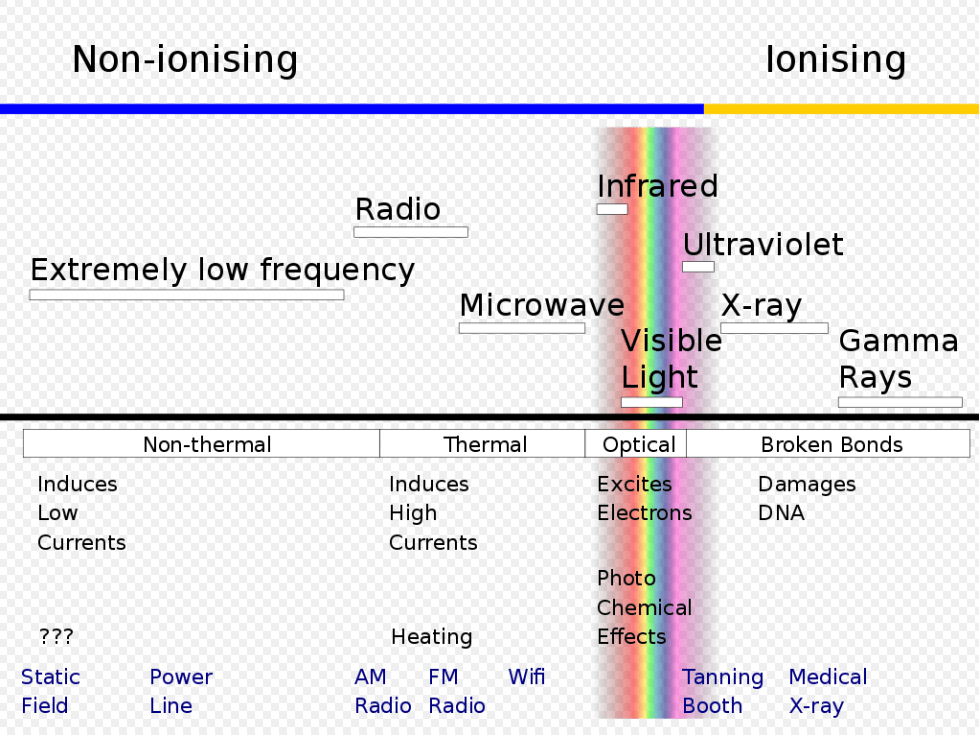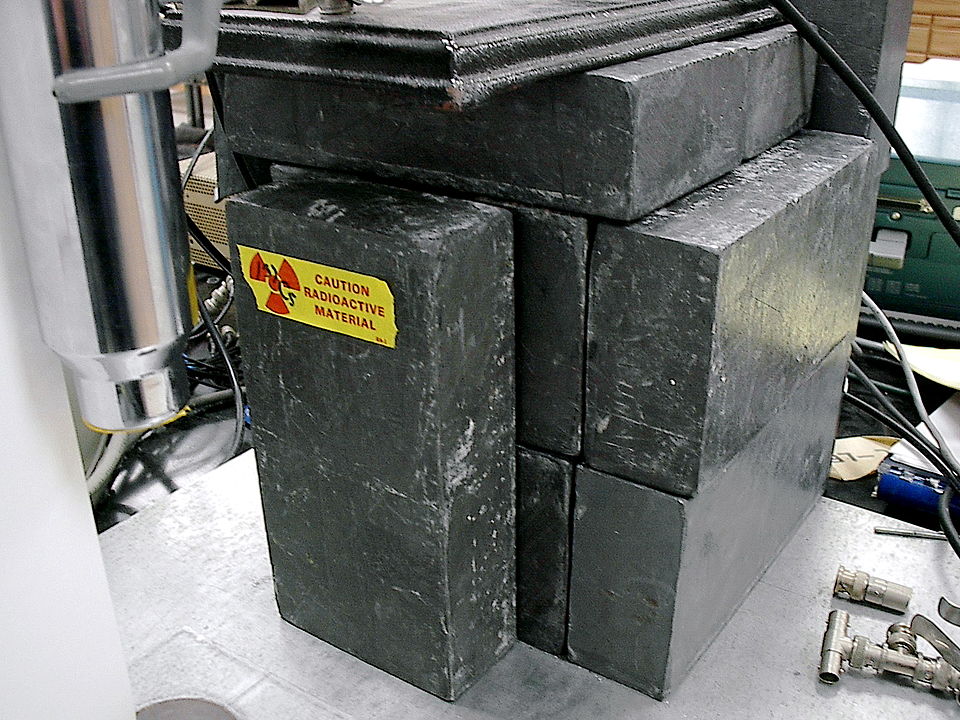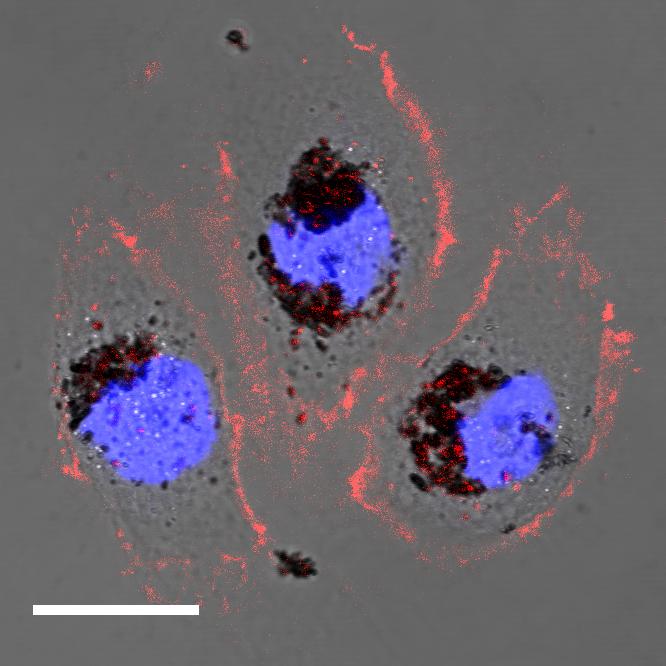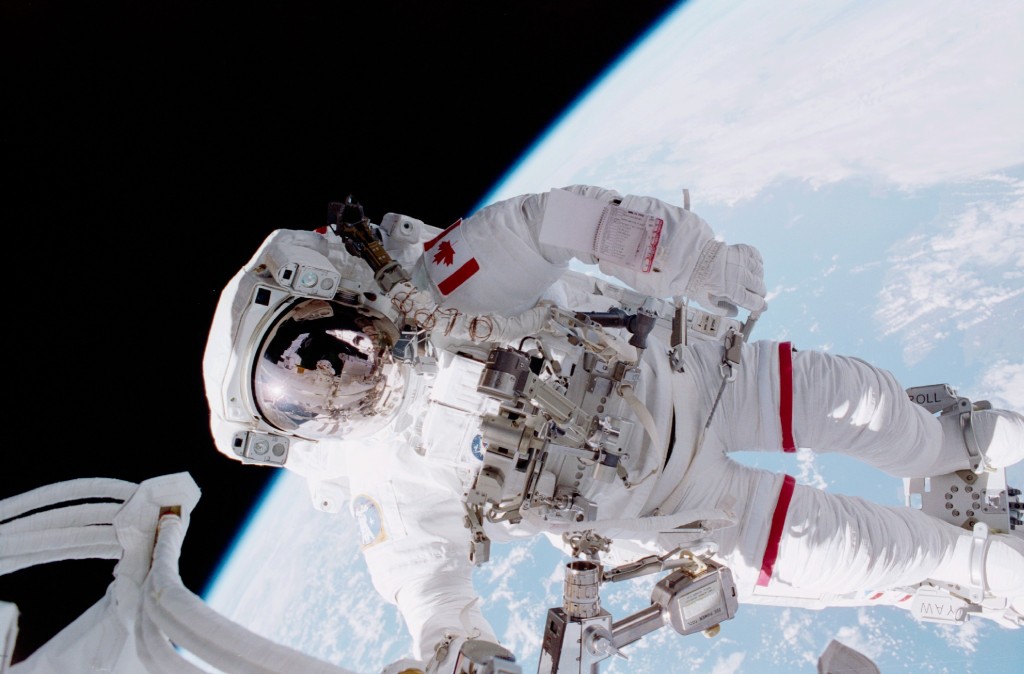Earth is a radiation cocoon. Inside that cocoon, the atmosphere and the magnetosphere keep us mostly safe from the Sun’s radiaition. Some ultraviolet light gets through, and can damage us. But reasonable precautions like simply minimizing exposure can keep the Sun’s radiation at bay.
But space is a different matter altogether. Among the many hazards it poses to astronauts, ever-present radiation is one that needs a solution.
Now a team of researchers have developed a new biomaterial to protect astronauts.
This new development is centered around melanins, pigments that are found in most living things on Earth, including animals like us. Melanins are responsible for red hair, for turning fruit brown, and for darkening skin after exposure to the Sun’s uv radiation. And it’s that last point that’s crucial to this work.
The title of the new study is “Selenomelanin: An Abiotic Selenium Analogue of Pheomelanin.” Nathan Gianneschi, a Professor of Chemistry at Northwestern University, and associate director of the International Institute for Nanotechnology, led the research. Wei Cao from the Department of Chemistry at Northwestern is the paper’s first author. The study is published in the Journal of the American Chemical Society.
As ambitious space travel plans take astronauts further from Earth for longer periods of time, the astronauts face increased risks. Leaving Hollywood-style catastrophes aside, some of the hazards are chronic rather than acute. Just like here on Earth, protection from solar radiation over time is important.
“Given the increased interest in space travel, and the general need for lightweight, multifunctional and radioprotective biomaterials, we’ve become excited about the potential of melanin.”
Lead Researcher Nathan Gianneschi, Professor of Chemistry, Northwestern University
But the risk in space is much greater. Once outside of Earth’s cocoon, astronauts are exposed to much more radiation. Not only from the Sun’s regular, steady output, but from solar flares, and even cosmic rays. Space is awash in dangerous ionizing radiation.

When astronauts spend time outside of Low Earth Orbit, they face greater risks from exposure to that radiation: cancer and other degenerative diseases, radiation sickness, and even central nervous effects, according to NASA. In fact, NASA says that astronauts can be exposed to doses of radiation ranging from 50 to 2,000 Milli-Sieverts (mSv). But even 1mSv is equivalent to approximately three chest x-rays, so it’s like astronauts are exposed to between 150 and 6000 chest x-rays. (Would you sign up for that?)
We could encase astronauts in lead—or put them behind lead shields like x-ray technicians in hospitals—and they would be protected. The problem is, how can astronauts perform all their duties, while still being protected from all the hazardous radiation?
Lead is also extremely heavy, and it’s impractical to launch lead into space for radiation shielding. “It’s unlikely that we’re going to be able to fly dedicated radiation-shielding mass,” for missions like Artemis, said Kerry Lee of NASA’s Johnson’s Space Radiation Analysis Group, in a press release.

That’s what led to the interest in melanin.
“Given the increased interest in space travel, and the general need for lightweight, multifunctional and radioprotective biomaterials, we’ve become excited about the potential of melanin,” said lead researcher Nathan Gianneschi, in a press release. “It occurred to our postdoctoral fellow Wei Cao that melanin containing selenium would offer better protection than other forms of melanin. That brought up the intriguing possibility that this as-yet undiscovered melanin may very well exist in nature, being used in this way. So we skipped the discovery part and decided to make it ourselves.”
On Earth, when our skin is exposed to UV radiation, we produce more melanin. That darkens the skin, and the melanin pigmentation is effective at absorbing light. In fact, it can absorb up to 99.9% of UV radiation.
Researchers already know that melanin has potential to protect astronauts from radiation. A separate research team is experimenting with samples of it on the International Space Station, to see how it responds to the radiation there, which is not only UV radiation, but more energetic radiation like x-rays.

But there are different types of melanins. The one being tested on the ISS is actually a composite of fungal melanin and polymers. The lead researcher on that work is Radamés J.B. Cordero from Johns Hopkins. “The goal will be to take melanin and create biomaterials inspired by nature, Cordero explained. “We’re seeing if we can mimic biology and learn from biology to our benefit.”
But this new research is going in a slightly different direction, by looking at melanin enriched with selenium. Selenium has an interesting relationship with light, and is used as a pigment, in glassmaking, in x-ray detectors, and in solar cells. Clearly, something’s up with selenium when it comes to radiation.
Previous research has shown that selenium compounds can protect animals from x-rays. So the team behind the new work wondered if combining melanin with selenium would yield a new way of protecting astronauts.
Rather than spend who knows how long trying to find the compound somewhere in nature, they decided to make their own compounds in a lab. They synthesized a new biomaterial that they’re calling “selenomelanin.” They treated cells with the new material, alongside cells treated with synthetic pheomelanin and eumelanin. They also used cells with no protective melanin as a control group.
Then came the radiation. They exposed all of the cells to a dose of radiation that would be lethal to a human. The result? Only the cell treated with their synthesized selenomelanin showed any normal cell cycles.

Northwestern University
“Our results demonstrated that selenomelanin offers superior protection from radiation,” Gianneschi said. “We also found that it was easier to synthesize selenomelanin than pheomelanin, and what we created was closer than synthetic pheomelanin to the melanin found in nature.”
It gets better.
The team also found out that unlike the samples sent to the ISS by a separate research team, which are expensive to produce, this team’s selenomelanin can be bio-synthesized. That means that live cells can produce it when fed the right nutrients. And the biosynthesized selenomelanin retains its protective properties.
“With an abundant source of selenium in the environment, some organisms may have been able to adapt to extreme circumstances such <as> radiation through the beneficial effects of selenomelanin,” Gianneschi said.
“Our work points to the possibility that melanin may act as a repository for selenium, helping ensure that organisms benefit from it,” said Cao. “Selenomelanin may play an important role in how selenium is metabolized and distributed biologically. It’s an area for further investigation.”
This discovery could lead to better protection for astronauts—and radiation sensitive materials—while in space. The team of researchers envisions a topical material like sun-screen, that can be applied to skin or materials for protection.
More:
- Press Release: New biomaterial could shield against harmful radiation
- Research Paper: Selenomelanin: An Abiotic Selenium Analogue of Pheomelanin
- Universe Today: NASA Undeterred by the Threat of Space Radiation

